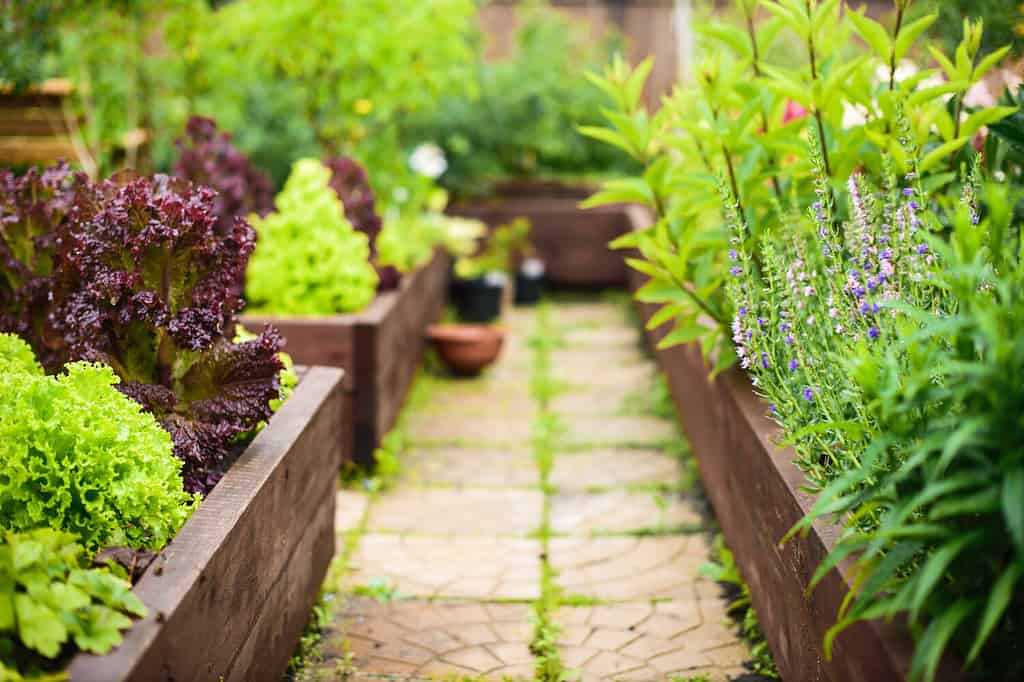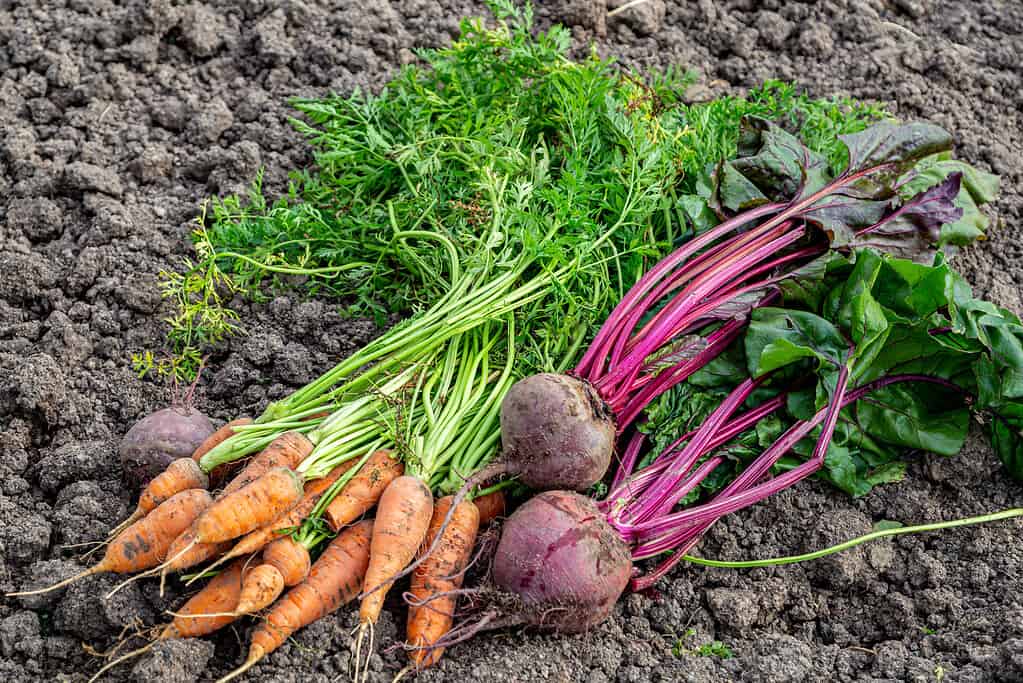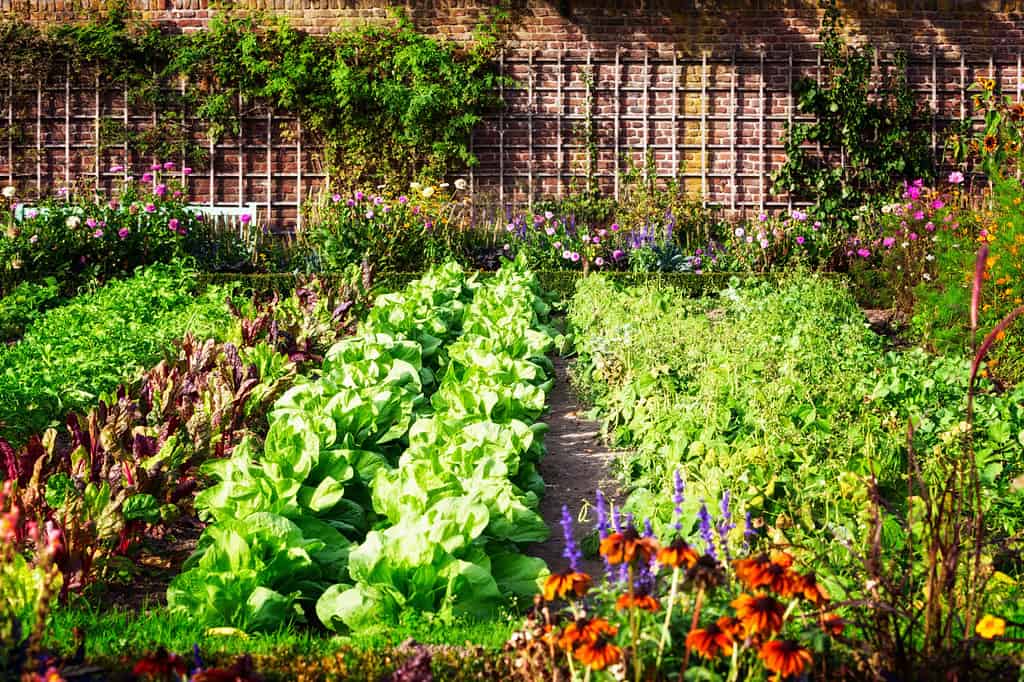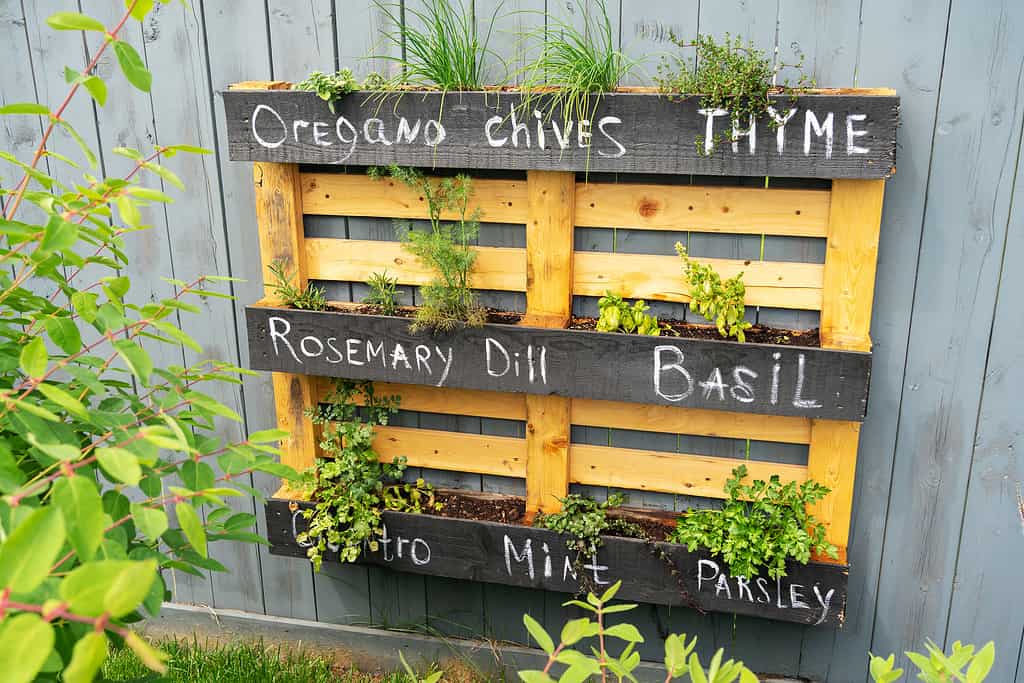Imagine enjoying veggies plucked from your raised garden bed – it’s easier than you think!
Whether you’re a seasoned gardener or a newbie, raised garden beds offer a world of benefits. When it comes to growing a thriving garden, raised garden beds are a game-changer.
These elevated, contained spaces offer a myriad of benefits, from improved soil quality to easier maintenance.
Whether you’re a seasoned gardener or just getting started, choosing the right vegetables is crucial to a successful harvest.
In this article, we’ll explore some of the finest options for your raised garden beds. From vibrant tomatoes and crunchy bell peppers to the versatile zucchini and leafy greens, we’ll delve into the world of veggies that not only flourish in raised beds but also promise a season of delightfully fresh and homegrown flavors.
Discover the key to a fruitful garden and embark on a journey to greener, healthier living.
Raised Beds: Elevating Your Gardening Experience

Raised garden beds are easy to build and maintain for fresh, healthy vegetables.
©Nadezda Verbenko/Shutterstock.com
The use of raised garden beds are a gardening innovation that has gained popularity for their numerous advantages. These contained, elevated planters are essentially boxes or frames filled with soil, and they provide an array of benefits, making them an excellent choice for both novice and seasoned gardeners.
Creating Your Raised Bed: A How-To Guide
Location: Selecting the optimal spot for your raised garden bed is the first step. Ensure it receives at least 6-8 hours of sunlight daily, as most vegetables thrive in full sun. It’s also important to place it on level ground, as this aids in water distribution and makes gardening tasks easier. Avoid areas with poor drainage to prevent waterlogged soil.
The Bed: You can purchase pre-made raised bed kits, or you can build one from scratch using wood, concrete blocks, or even recycled materials. A standard size for a raised bed is 4 feet in width, which allows for easy access from either side without the need to step on the soil. The depth of your bed will depend on the plant’s root system, with 12-18 inches being suitable for most vegetables.
The Soil: Use a quality garden soil mix or a combination of compost, topsoil, and organic matter to fill your raised bed. This ensures good drainage and nutrient-rich soil for your vegetables to thrive.
Maintaining Your Raised Garden Bed: Tips for Success
Water: Raised beds tend to dry out faster than traditional gardens, so a regular watering schedule is essential. Invest in a soaker hose or drip irrigation system to maintain even moisture levels. Mulching the soil’s surface helps retain moisture and reduces the need for frequent watering.
Weed Control: Raised beds are less prone to weed infiltration, but it’s crucial to stay vigilant. Regularly inspect your bed for any unwanted growth and remove them promptly to prevent competition for nutrients.
Fertilization: Nutrient levels can deplete over time, so consider applying organic fertilizers or compost throughout the growing season to keep your plants healthy and productive.
Crop Rotation: To prevent soil depletion and pest issues, practice crop rotation by changing the types of vegetables you grow in your raised beds from season to season.
Pest and Disease Management: Inspect your plants regularly for signs of pests or diseases. Early intervention can prevent widespread infestations. Consider using natural remedies or organic pesticides to protect your crops.
By following these guidelines, you can create a productive and sustainable garden in your raised beds, yielding a bountiful harvest year after year.
The Top 10 for Magical Planters.

Fresh vegetables like carrots and beets are great choices for raised beds.
©iStock.com/Olga Seifutdinova
1. Carrots
Get your hands dirty with carrots. These crunchy orange delights are perfect for raised garden beds.
Sow carrot seeds directly into well-draining soil. As they grow beneath the surface, you’ll enjoy the anticipation of plucking these vitamin-packed root vegetables.
2. Radishes
If patience isn’t your virtue, radishes are your go-to. With their crisp texture and peppery flavor, they’ll add a zing to your salads.
They’re speedy growers, ready to harvest in just three weeks.
3. Lettuce
Say goodbye to store-bought lettuce with a raised bed.
Snip off fresh leaves as you need them. From romaine to arugula, your salads will never be the same.
4. Spinach
Get your Popeye on with spinach.
These nutrient-rich greens thrive in cooler months, ensuring you have an ongoing supply of this superfood.
5. Tomatoes
Nothing beats the satisfaction of growing your own tomatoes. Stake them up and watch as they produce vine-ripened, sun-kissed sweetness.
Don’t forget the mozzarella for the perfect Caprese salad.
6. Zucchini

Fresh vegetables in raised beds ready for harvest.
©ifiStudio/Shutterstock.com
Warning: Zucchini can be prolific! Plant these in a raised bed with ample space, and you’ll be sharing them with the neighborhood.
But, that’s a good problem to have because they make delicious muffins and fritters.
7. Peppers
From bell peppers to spicy chili varieties, these gems thrive in the controlled environment of raised garden beds.
Spice up your dishes with a colorful array of homegrown peppers.
8. Cucumbers
If pickles are your passion, grow your cucumbers.
Trellis these climbers in your raised bed, and soon, you’ll have the crunchiest pickles on the block.
9. Green Beans
Whether you prefer bush or pole beans, they are both easy to grow in a raised bed.
These beans are a great addition to your veggie lineup and offer that unmistakable, fresh garden taste.
10. Herbs
Basil, mint, and oregano are just a few herbs that thrive in raised beds.
They’ll add incredible flavors to your dishes, making every meal a gourmet experience.
10 Interesting Garden Facts

Fresh mint is just one of the many herbs perfect for a raised bed.
©Olesya Myzzz/Shutterstock.com
Now, let’s sprinkle in some fascinating facts about the wonders of homegrown veggies:
Fascinating Fact 1: Fresh is Best
Homegrown veggies taste better and are more nutritious. Say goodbye to bland and hello to flavor-packed dishes.
Fascinating Fact 2: Elevate Your Gardening Game
Raised garden beds take your gardening experience to new heights—literally. These compact planters make gardening accessible and enjoyable for all.
Fascinating Fact 3: Less Back-Breaking Work
Forget the backaches and endless weeding. Raised beds mean less bending and more enjoyment.
Fascinating Fact 4: Warm Soil, Happy Veggies
Raised beds allow the soil to warm up faster in the spring, giving your veggies a head start.
Fascinating Fact 5: Say Goodbye to Waterlogged Roots
Superior drainage in raised beds prevents waterlogged roots and root rot, so your plants stay healthier.
Fascinating Fact 6: Tailored Soil Mix
You control the soil quality. Mix in the perfect blend of compost and topsoil for your plants’ happiness.
Fascinating Fact 7: Pest-Proof Paradise
Raised beds make it easier to fend off garden pests. Your veggies are safer and more secure.
Fascinating Fact 8: Extended Growing Seasons
Use row covers and extend your growing season with raised beds, even in unpredictable climates.
Fascinating Fact 9: Perfect for Small Spaces

Creative wood herb planter made of wooden pallets pallet hanging on fence in a backyard allows for maximizing limited space.
©Oksana Aksenova/iStock via Getty Images
No garden? No problem. Raised beds are perfect for patios, balconies, and small yards.
Fascinating Fact 10: Outsmart Garden Critters
Elevated beds mean fewer critters snacking on your precious veggies. It’s like a fortress for your garden!
The world of raised garden beds offers a cornucopia of benefits. From the simplicity of growing the easiest vegetables to the pleasure of savoring your homegrown treasures, it’s a win-win for both beginners and experienced gardeners.
So, why wait? Roll up your sleeves and start your raised garden bed adventure today – fresh, flavorful veggies are just a harvest away.
The photo featured at the top of this post is © Dave Litterio/iStock via Getty Images
Thank you for reading! Have some feedback for us? Contact the AZ Animals editorial team.







